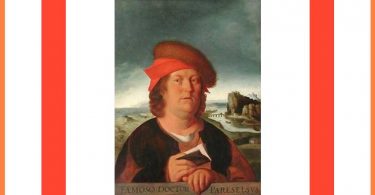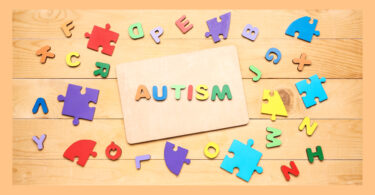Introduction
“Darkness or absence of light is ignorance. From that total unknown, the character of the ailment (patient) emerges slowly through observation and information till it becomes clear as white, which leads to the concept of remedies”.
Over a period of past two decades, my books “The Spirit of Homoeopathy” and “The Substance of Homoeopathy” have achieved much popularity. These books, written to introduce students of Homoeopathy to my line of thinking are not, and were never intended to be, texts of Materia Medica. With that view I had decided that I might as well write a book in my own style to convey my own experience. The material presented here has been observed and confirmed in my own practice; it is material I am sure of. I have not included remedies of which I have little experience or knowledge. I have attempted to convey the innermost feeling or the basic delusion of the remedy while connecting the situation, source, miasm and kingdom. The rubrics and physical symptoms cited are ones which I have observed repeatedly and often used to confirm the remedy prescribed. These ideas have helped me in my clinical practice and I wish to share them with the profession.
There is a common misconception to the effect that I stress mental and emotional symptoms to the exclusion of physical symptoms. This is, I repeat, a misconception. If I often seem to speak exclusively of the mental/emotional state, it is because understanding this requires some degree of insight into the patient as well as into the remedy and it is more difficult than noting physical symptoms. Nonetheless, in practice I give a lot of importance to the physical symptoms, to the meaning of the pathology, and to the modalities which have to be matched with those of the remedy. Giving a remedy solely on a vague idea of the mental picture is a prescription for failure. Such an approach is risky and certainly not one that I follow nor recommend.
The ideas presented in this book are not superficial: they are not mere hints. I have tried to bring out the innermost feelings of the remedy and it is not easy to discover these in patients other than by artistic case-taking which delves deeply into such things as the patients’ delusions, dreams, hobbies, etc. What appears on the surface may be quite different from what is actually inside. For example, I had a case in which the expression was one of stage fright, but I observed that, in that situation, the patient’s reaction, tremendous panic and fear, was as if he was about to be killed.
My idea of understanding a remedy is to grasp the connection that ties together its myriad symptoms: the basic delusion, its source (kingdom), the miasm to which it belongs, its symptoms – all must be understood as aspects of a single whole if we are to even begin to truly understand a remedy. It is my attempt to trace out these connections that distinguishes this work from other Materia Medicas. I believe, for example, that the “connecting link” in Sepia is the feeling that she is forced to do something against her intention. In the section on Sepia I try to show how this “link” connects every aspect of the remedy. This has been confirmed by me in practice time and again -1 do not believe it is mere theory… and yet the reader must remember that this is Rajan’s experience and not necessarily the final word.
Similarly, the understanding of miasms presented here, for example, the theme of sycosis as being “fixed” is not traditional. It is merely my own understanding and someone else’s view might well be different. A complete discussion of my understanding of miasms is presented in “The Substance of Homoeopathy” and is not reported here. In many cases I have described the “situation” of the remedy under discussion. Let me note here that the situation of the remedy is not necessarily the actual situation of the patient; it is rather the situation in which he (unconsciously) perceives himself to be. Thus, when I say the Magnesium is an orphan, it means that the patient feels like an orphan though he may, indeed, still have living parents. People set up situations according to their perception of reality. Magnesium muriaticum, for example, feels that his friends will betray him and so avoids people. This only reinforces his feeling of being friendless.
I wish to reiterate once again that a good Homoeopathic practitioner does not try to fit the patient to a particular remedy, but seeks first to clearly understand the patient and then to find the appropriate remedy through repertorization, the study of likely remedies in various Materia Medicas and review of the experiences of other homoeopaths with those remedies. Rather than trying to see what part of a considered remedy does fit the case, he must see what does not fit and must remain skeptical. The prescriber who would grow in skill must be able to recognise what does not fit and resist the tendency to “force” a fit. In this way he will be led to consider another remedy which might look similar but is not. This is what I try to do and if you do the same you may be able to develop pictures of lesser known remedies.
This book is meant for those who have read “The Spirit of Homoeopathy” and “The Substance of Homoeopathy” because it is those earlier works that most fully express my understanding of the Organon and Materia Medica. Without an understanding of my ideas on such things as case-taking, classification of remedies according to kingdom, miasms, etc., this book will not be of much benefit. This work may be used as an adjunct to the previous works but not as a substitute for them. The reader who attempts to use this book without understanding the fundamental concepts may easily find himself lost without a compass.
Finally let me repeat that the reader must bear in mind that this book is based on the experience of one homoeopath amongst the multitude and should be taken as “notes along the way”, not as the final word. Used in this way it may be of value.
Excerpts from Introduction -Soul of Remedies






DEAR DR,
I HAVE SEEN THAT WHILE TAKING A CASE, GENERALLY HOMEOPATHS TAKE VERY LONG BIOGRAPHY OF PATIENT AND HIS FAMILY, HIS MOTHER AND FATHER AND GRANDS AND GREAT GRANDS ETC ETC. IN MY PRACTICE I HAVE SEEN THAT VERY LONG DETAILS ARE USELESS AND CREATE BORE DOME IN THE PATIENT. PATIENT SPECIALLY WOMAN DOES NOT WANT TO REVEAL AND TALK MUCH ABOUT HER PRIVATE LIFE. MORE OVER NEITHER THE PATIENT NOR THE DR I SUPPOSE, HAS THE TIME TO SPEND IN MODERN BUSY LIFE TO COLLECT LONG DETAILS WHICH DO NOT HELP LATER IN FINDING SIMILIMUM. WHENEVER I HAVE TRIED TO TAKE LONG DETAILS, THE RESULT WAS THAT THE PATIENT NEVER RETURNED THOUGH MY PRACTICE IS ABSOLUTELY FREE PL guide me.
THANKS AND REGARDS
fortunately I learned how to see the essence of a person in her photograph. no one wants to believe it, but its true. I see the constitution in a foto. no need to asking for symptoms etc. like I said sankaran has a belladonna constitution, vithoulkas is lachesis …
Dear M.Mayer,
Kindly share with me, how i can learn this skill (essence of a person in her photograph).
Regards,
you might contact at [email protected]
Dear ishtiaq,
Unfortunately, I am only now seeing your reply to my post.
Three prerequisites are required, if you want to assign the correct constitutional remedy to a person via photo:
1. You need to understand the remedy and its essence.
2. You need to be fully and deeply self-reflective so that you do not project your unconscious aspects onto the other person.
3. You must be able to feel other people via tele-empathy.
I have trained a lot and still practice almost every day, so that in the meantime I have created a database with photos and their assignment to the remotely determined constitutional remedy.
I hope you enjoy practicing 🙂
Regards
M. Mayer
Dear M Mayer
May I have a consultation with you?
I live in the UK and am trying to find a Homeopath who can do distance appointments.
Hello Mr Mayer, could you find my essence plz?
How and from where do you learn this?. Could you share please?
What do you charge for a consult?
You are absolutely right, but we can take a chance to those left hopeless, homoeopathy cures at ones. immediately follows health if we choose simillimum, no matter what may the morbid malady,
I think, you have to charge your patients. You need to provide free service only for who actually needs it. Otherwise, they may feel suspicious or do not value your service, etc., You may need to give an idea on how your case witnessing will be which is best achieved by the behind your ear talk through fellow cured patients. Also, while case witnessing, focus on the patients’ experience rather than the story though the story may have helped you reach the inner experience. Also explore multiple areas like home, work, hobbies, dreams, interests, movies liked, etc., to confirm. Try to achieve the correct remedy at the first appointment itself which will build confidence on you as a true healer when patient won’t be bothered about revealing their personal feel.